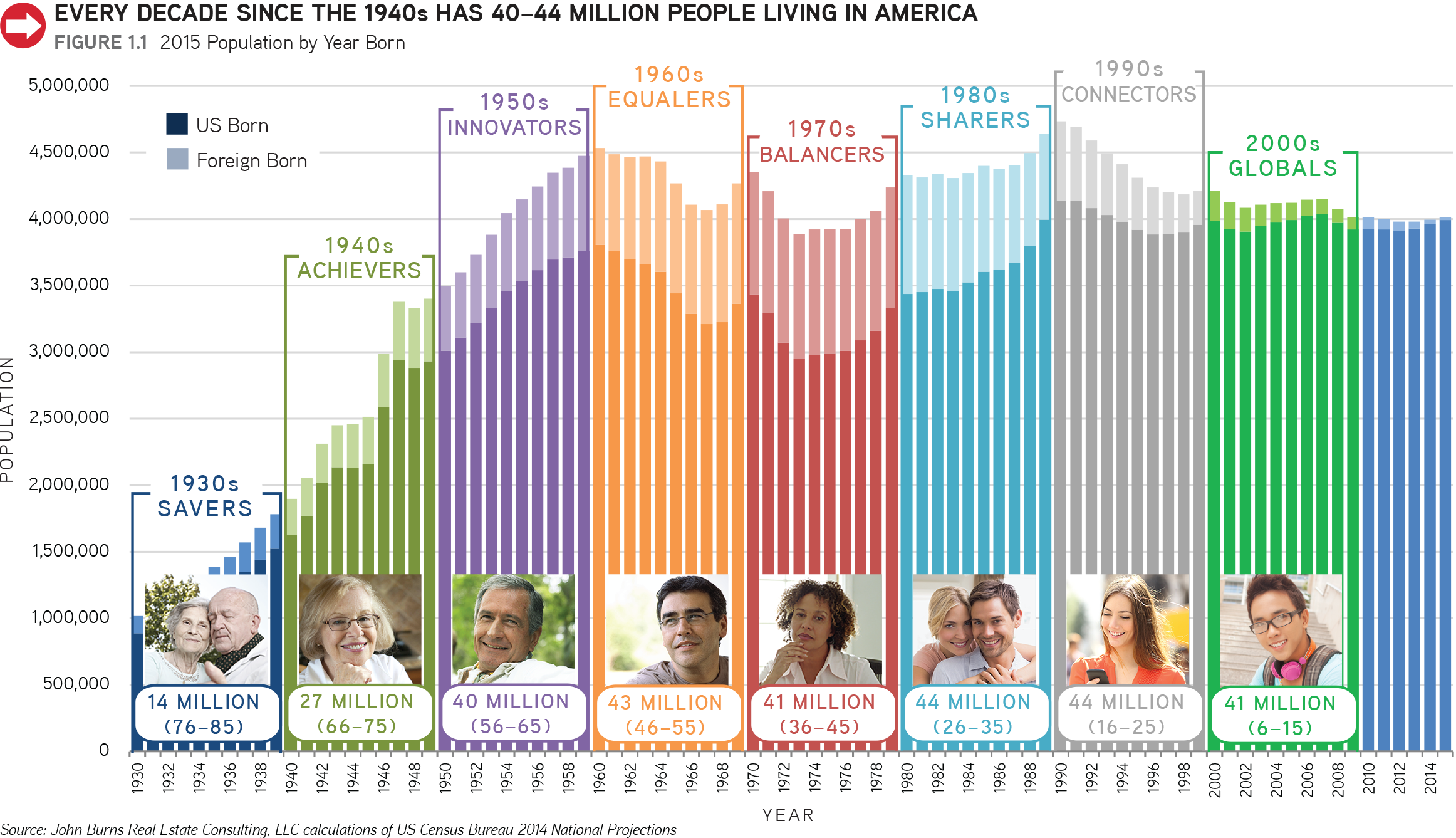Baby Boomers. Gen X. Millennials.
These usual generational definitions are too broad for those trying to understand and target particular groups.
Why do others group a 31-year-old father and a 16-year-old high school sophomore into the same Millennial generation? The 31-year-old father has bounced around from job to job in search of a better income to pay off his student loans, and drives for Uber at night while his kids sleep. The 16-year-old student studies hard in school while constantly texting her friends and taking Netflix study breaks. These two share very few interests.
What do a 70-year-old retired grandmother and the 53-year-old parent of a high school sophomore have in common? The septuagenarian Baby Boomer retired years ago. She draws a Social Security check, has no mortgage payment, and dotes on her grandkids. The 53-year-old Baby Boomer works fifty hours per week to save for college, and runs half marathons on the weekend, refusing to admit his real age.
LinkedIn’s Video on Big Shifts Ahead’s Generational Definitions
LinkedIn interviewed author John Burns in their New York studio last year. In this three-minute video, John gives a brief rundown of the generational definitions by decade born.
The 1930s Savers
Learned to Save Early in Life (Born 1930–1939)
Shaped by forced frugality in childhood and booming economies during their working years. Drove the shift from cities to suburbs and started a surge in divorces. Ranging from 76 to 85 in 2015, they are spending on medical and remodeling, and struggling with how to live longer than anticipated in a low-interest-rate environment.
Think of the 1930s Savers as the classmates of Warren Buffett, Mary Tyler Moore, Elizabeth Taylor, and John McCain.
The 1940s Achievers
Achieved Dual Income Financial Success (Born 1940–1949)
Driven to succeed financially, they began the surge in dual-income households and lower expenses (fewer kids), empowered by approval of the birth-control pill in 1960. Continuing to achieve financially today—19% of 65–69 year-olds still work full time, nearly double the Savers' rate at that age.
Think of the 1940s Achievers as the classmates of Martha Stewart, Bill Clinton, Dolly Parton, and Austrian-born Arnold Schwarzenegger.
The 1950s Innovators
Led a Technology Revolution (Born 1950–1959)
Started new companies at rates not equaled since, boosting productivity and longevity with their inventions. Acquired possessions such as big houses at unprecedented levels, aided by credit cards, mortgages, and 30+ years of falling interest rates. Maintaining active lifestyles as they begin drawing on Social Security and spending their unprecedented net worths.
Think of the 1950s Innovators as the classmates of Steve Jobs and Bill Gates, as well as Oprah Winfrey and Ellen DeGeneres.
The 1960s Equalers
Female Education Levels Surpassed Men for the First Time (Born 1960–1969)
With both sexes pushing for more equal opportunities in the world, the Equaler women were the first beneficiaries of Title IX, and the first black US president came from this generation. For the first time, more than 60% of women worked. Dads more than doubled their involvement in childcare. They will retire less affluent than prior generations.
Think of the 1960s Equalers as the classmates of Tom Cruise, Michelle Obama, Sarah Jessica Parker, and Robert Downey Jr.
The 1970s Balancers
Led 2001 Shift to Spend More Time with Family (Born 1970–1979)
Raised by more dual-income and divorced parents than ever before, Balancer teens embraced TV and video games. Reacting against their oft-divorced parents' workaholic lifestyles, they divorce less, stay home with kids more, and have children later in life. Disproportionately hurt by the housing crash, they own fewer homes and have much lower net worths. Twenty-three percent are foreign born.
Think of the 1970s Balancers as the classmates of Leonardo DiCaprio, Jennifer Garner, Reese Witherspoon, and Kobe Bryant.
The 1980s Sharers
Led Transition to Sharing Economy (Born 1980–1989)
Invented the sharing economy out of necessity, taking advantage of new technologies. The most-educated cohort ever, they are racked with student debt, under-employed, and a full 20% live below the poverty line. They share locations, likes, photos, cars, etc. to connect with friends and live in urban areas where there is more to do and mass transit.
Think of the 1980s Sharers as the classmates of Beyoncé Knowles, LeBron James, Mark Zuckerberg, and Taylor Swift.
The 1990s Connectors
Wirelessly Connected 24/7 to Friends, Family and Knowledge
(Born 1990–1999)
With many still in school, many of their shifts have yet to emerge. They grew up with Internet access and know little privacy. More were raised by a single parent than previously, and early Connectors continue the growing trend of having children out of wedlock. Highly educated, underemployed, and wary of credit.
Think of the 1990s Connectors as the classmates of Jennifer Lawrence, Selena Gomez, Malia Obama, and Canadian-born Justin Bieber.
The 2000s Globals
Very Globally Aware (Born 2000–2009)
The Globals are growing up with multicultural friends and value diversity. They will bear the burden of prior generations' underfunded retirement obligations. With technology a big part of their education to date, we expect big shifts from the Globals.













